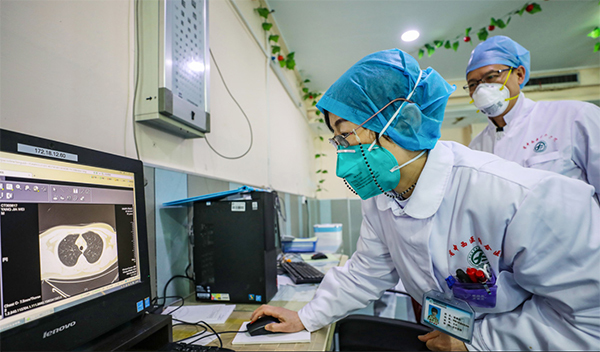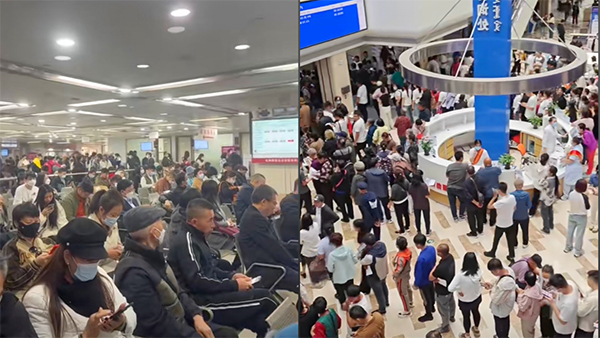On October 1, 2022, Hong Kong, Uyghur, and Tibetan groups organized a march ending at the Chinese Embassy in the UK. They protested against the Chinese Communist Party (CCP) extending its reach overseas, monitoring and threatening individuals abroad.
People News - Despite the cold wind and drizzle, nearly 30 Hong Konger, Tibetan, Uyghur, Chinese, and local community groups in the UK held a large-scale protest on Saturday (8th) outside the former Royal Mint Court in London, opposing the construction of a new "super embassy" by the Chinese Communist Party (CCP) at the site. Organizers reported that around 4,000 people participated, making it the largest overseas Hong Konger protest in recent years.
According to Radio Free Asia, chaos broke out shortly after the protest began. As hundreds of protesters gradually surged toward the former Royal Mint Court, filling the adjacent safety island and both sidewalks, the 20 or so Metropolitan and City of London police officers present struggled to maintain control.
Police repeatedly instructed protesters on the embassy side to remain within the designated restricted area. Half an hour later, officers began issuing warnings— including to protesters and Radio Free Asia reporters— citing Section 14 of the Public Order Act, ordering all individuals to "return to the sidewalk," warning that violators could be arrested.
At this point, the protesters had completely occupied the intersection outside the Royal Mint Court, causing near-total traffic paralysis. Some trapped vehicles attempted to forcibly drive through, but were stopped by police. Eventually, after coordination with event volunteers, the protesters cleared a path to allow the stranded vehicles to turn around and leave the intersection.
Shortly afterward, commotion broke out at the intersection. Multiple police officers arrested a female Hong Kong protester, dragging her toward a police vehicle. As this happened, protesters screamed for help, and one male protester attempted to "rescue" her but failed and fled the scene. The female protester was ultimately taken into the police vehicle.
Chaos Leads to Two Arrests
Seeing this, protesters surrounded the police car, chanting "Release!" to demand her release. Clashes broke out between the two sides, and in the ensuing chaos, another male protester was arrested, handcuffed, and seated on the ground before being taken into a police vehicle. Throughout the altercation, police only used physical restraint and did not deploy pepper spray or batons.
During the chaos, another woman suffered an asthma attack and collapsed. After initial treatment by police and medics, she was transported to a hospital by ambulance.
A large number of reinforcements, including officers from the Territorial Support Group— a unit specializing in crowd control— arrived to restrict protesters to the sidewalk outside the former Royal Mint Court. By 4:00 PM, the intersection was reopened to traffic, but demonstrators began repeatedly crossing the street in sync with traffic lights. Police then invoked the Public Order Act, ordering the protest to disperse by 4:15 PM. After the deadline passed, officers demanded all attendees leave. At one point, a Hong Konger engaged in a verbal confrontation with an officer and was briefly handcuffed but later released.
Initially, a female officer at the scene denied any arrests had been made. However, Tower Hamlets Police later confirmed on social media platform X (formerly Twitter) that two protesters had been detained. Notably, no CCP-aligned "counter-protesters" or nationalistic Chinese agitators ("Little Pinks") were observed disrupting the demonstration.
Four Members of Parliament (MPs) attended the protest in support, including: Tom Tugendhat, former Minister of State for Security (Conservative Party); Blair McDougall, Chair of the All-Party Parliamentary Group on Hong Kong (Labour Party); Robert Jenrick, Shadow Justice Secretary (Conservative Party); Iain Duncan Smith, former Conservative Party leader.
They highlighted warnings from UK intelligence agencies that the CCP’s "super embassy" would function as a massive spy base, endangering Hong Kongers, Tibetans, Uyghurs, and other exiled communities, as well as local residents and national security. They criticized the Labour government for ignoring public opposition. Tugendhat further stated that if the CCP wants to build a "super embassy" in the UK, it must first shut down the concentration camps in Xinjiang.
London Residents: Embassy Location Disrupts Local Traffic
Local resident Nas told Radio Free Asia that the protest, which led to road closures on major London thoroughfares and disrupted traffic, clearly demonstrates that the site is unsuitable for the construction of a Chinese embassy. As a Muslim, Nas pointed out that the area is home to one of the largest Muslim communities in the UK. He expressed concerns that if the Chinese government’s embassy plan is approved, Beijing may try to impose its ideological values on the district—potentially even affecting local mosques.
He criticized the Chinese government for refusing to listen to residents’ opinions. In response, local residents have appointed lawyers to represent their opposition at a public hearing next Tuesday (Feb 11).
In 2018, the Chinese government purchased the historic Royal Mint Court, a prime London location with a history spanning over 200 years. The plan is to construct a "super embassy"—a diplomatic facility ten times larger than the current Chinese embassy, making it China’s largest overseas diplomatic mission in the world.
The local city council has twice rejected the planning application. However, the Labour government has stepped in to support the project, transferring the final decision to Deputy Prime Minister and Housing Secretary Angela Rayner. The public hearing next Tuesday will determine the embassy’s fate.










News magazine bootstrap themes!
I like this themes, fast loading and look profesional
Thank you Carlos!
You're welcome!
Please support me with give positive rating!
Yes Sure!